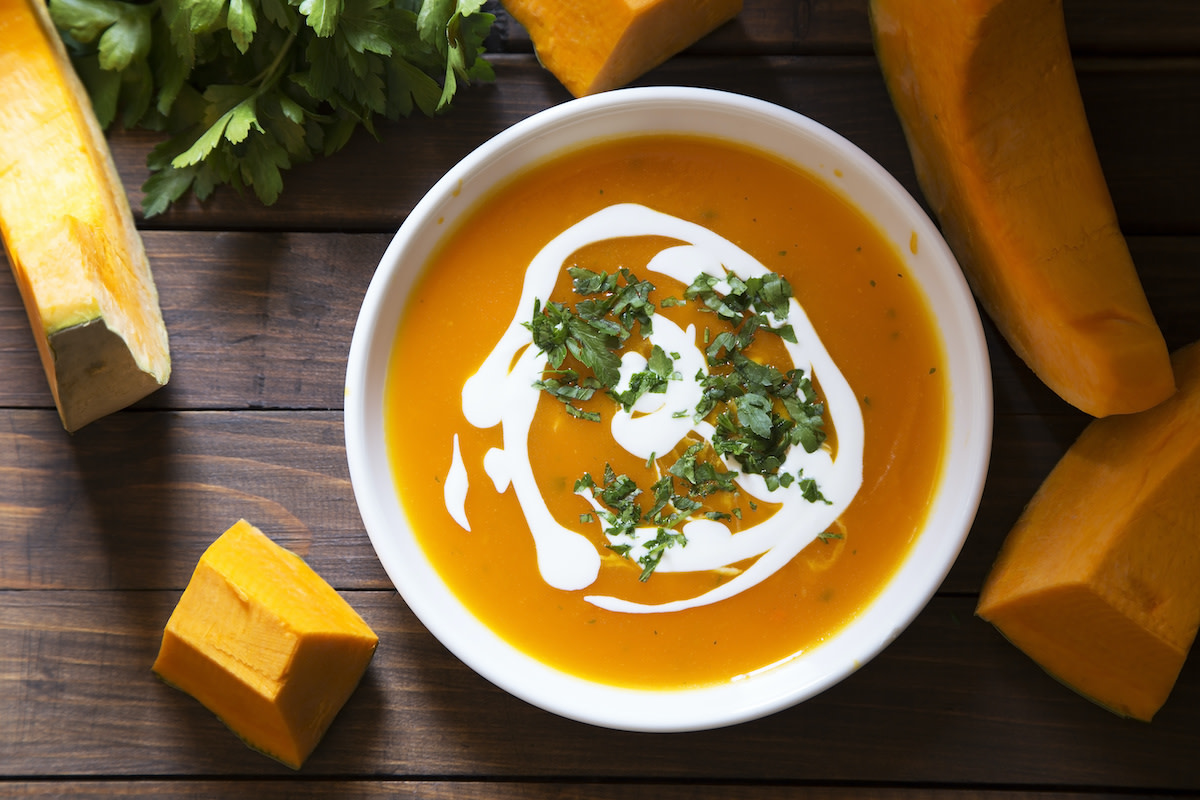Bisque vs. Chowder: Comparing the 2 Types of Creamy Soups
Written by MasterClass
Last updated: Sep 21, 2021 • 2 min read
Bisque and chowder are two types of thick soup with origins in French fishing villages. Learn about the differences between these two creamy soups.
Learn From the Best
What Is Bisque?
A bisque is a thick cream soup that chefs purée and strain for a fine, smooth final result. Traditional bisque recipes feature seafood like lobster, crayfish, shrimp, or crab as the main ingredient—chefs typically grind the crustacean shells into a fine paste to thicken the mixture. However, modern bisques may use puréed vegetables or aromatics in place of shellfish and thicken the base with rice or other starches. Other key ingredients of bisque soups are heavy cream and white wine.
Common bisques include lobster bisque, seafood bisque, crab bisque, and tomato bisque.
What Is Chowder?
A chowder is a thick, creamy soup featuring diced or chopped ingredients, left chunky for a hearty final result. Traditional chowder recipes feature seafood ingredients—for instance, clams or fish—while others forgo seafood in favor of vegetables or starches, like corn. Other key ingredients of chowder soups are heavy cream and potatoes.
Common chowders include New England clam chowder, potato chowder, fish chowder, and corn chowder.
Bisque vs. Chowder: 5 Differences Between the Soups
Bisque and chowder are two creamy types of soups that typically feature seafood ingredients, with a few key differences:
- 1. Texture: The key difference between bisques and chowders is in the final texture—bisques are a smooth, silky seafood soup, while chowders are chunky and toothsome with chunks of potatoes, meat, or vegetables.
- 2. Cooking methods: When making bisques, chefs follow a specific series of steps: They cook the seafood ingredients twice, thicken the mixture with a roux or rice, and purée or strain the ingredients for a smooth texture. (A popular theory for the name “bisque” is that it comes from the French words “bis” and “cuite,” which roughly translates to “twice-cooked”). Chowders are a much simpler affair, with cooks simply tossing all ingredients into a soup pot or slow cooker and allowing the mixture to simmer before serving the chunky soup.
- 3. Cream ratio: Bisques typically have a much higher ratio of cream to stock, making them richer and creamier than chowders, which have a lower cream-to-stock ratio.
- 4. Garnishes: Both bisques and chowders often come with garnishes atop the soup. The garnishes of chowders are usually simple and rustic, like crackers or a sprinkle of chopped chives. Bisques often feature more robust garnishes, like chopped lobster meat, herbs, or a drizzle of olive oil.
- 5. Reputation: Bisques are famous for being fancy or expensive, often on menus as an appetizer for an extensive, multi-course meal. Alternatively, chowders have a more homey reputation as comfort food for a chilly day.
Want to Learn More About Cooking?
Become a better chef with the MasterClass Annual Membership. Gain access to exclusive video lessons taught by the world’s best, including Alice Waters, Gabriela Cámara, Niki Nakayama, Chef Thomas Keller, Gordon Ramsay, Yotam Ottolenghi, Dominique Ansel, and more.
